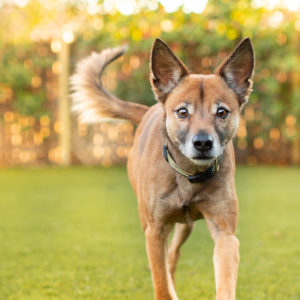Dogs “talk” a lot with their tails. Be aware that tail movement signals various canine moods, but to properly “read” a dog, you must size up the entire body language on display, and not just what’s happening with the tail.
Unfortunately, far too people zero in on a wagging tail and regard it as the human equivalent of a friendly handshake when greeting a dog for the first time. Wrong. For your safety, pay attention to the dog’s facial expression and watch out for any signs of body tensing.
When in doubt, accept the most fearful or aggressive signal on displayed. If the dog’s back end is tail wagging, but the dog’s face is grimacing and looking tense, play it safe and greet that dog from a distance.
Here’s a rundown of four common doggy tail positions and what they may signal:
- The tail wags swiftly from side to side and may even in a circular motion. Dogs happy to see you often make this tail movement, but assess the rest of the dog. Happy canines also match this tail movement with open grins, relaxed faces and loose, wiggling bodies.
- The tail is tucked tightly under the belly. Dogs who are scared or fearful go into self-protection mode when meeting someone for the first time. Look for dogs in this mood to crouch low to appear to shrink in size to clearly display they are not a threat.
- The tail is held tall and erect. Confident dogs raise their tails to expose their anal areas to permit other dogs to more easily sniff during greetings. Alert dogs also hoist their tails up high, especially hunting breeds like American Foxhounds and Beagles when they spot game. Dominant dogs sport tall tails with stiff, motionless bodies.
- The tail wags slowly side to side. Dogs who are feeling a bit unsure or cautious will make this tail movement. The tail wags stiffly and parallel to the ground. Facial muscles are tense and these dogs may even lean forward to warn not to approach them quickly.
What about dogs with short, cropped or no tails, such as Boxers, Bulldogs and Doberman Pinschers? For these kinds of dogs, you need to carefully assess their total body stance and be on the lookout for signs of tensing bodies.
To remind myself daily to completely “talk” with – and not at – my dogs, Kona and Emma as well as any dogs I meet, I drink coffee from a mug that reads: “Wag more. Bark less.” After all, creating a true connection with your dog requires more listening to them – their vocals and their silent body cues. Let your “canine conversations” begin!
— Arden Moore is the founder of Pet First Aid 4U

